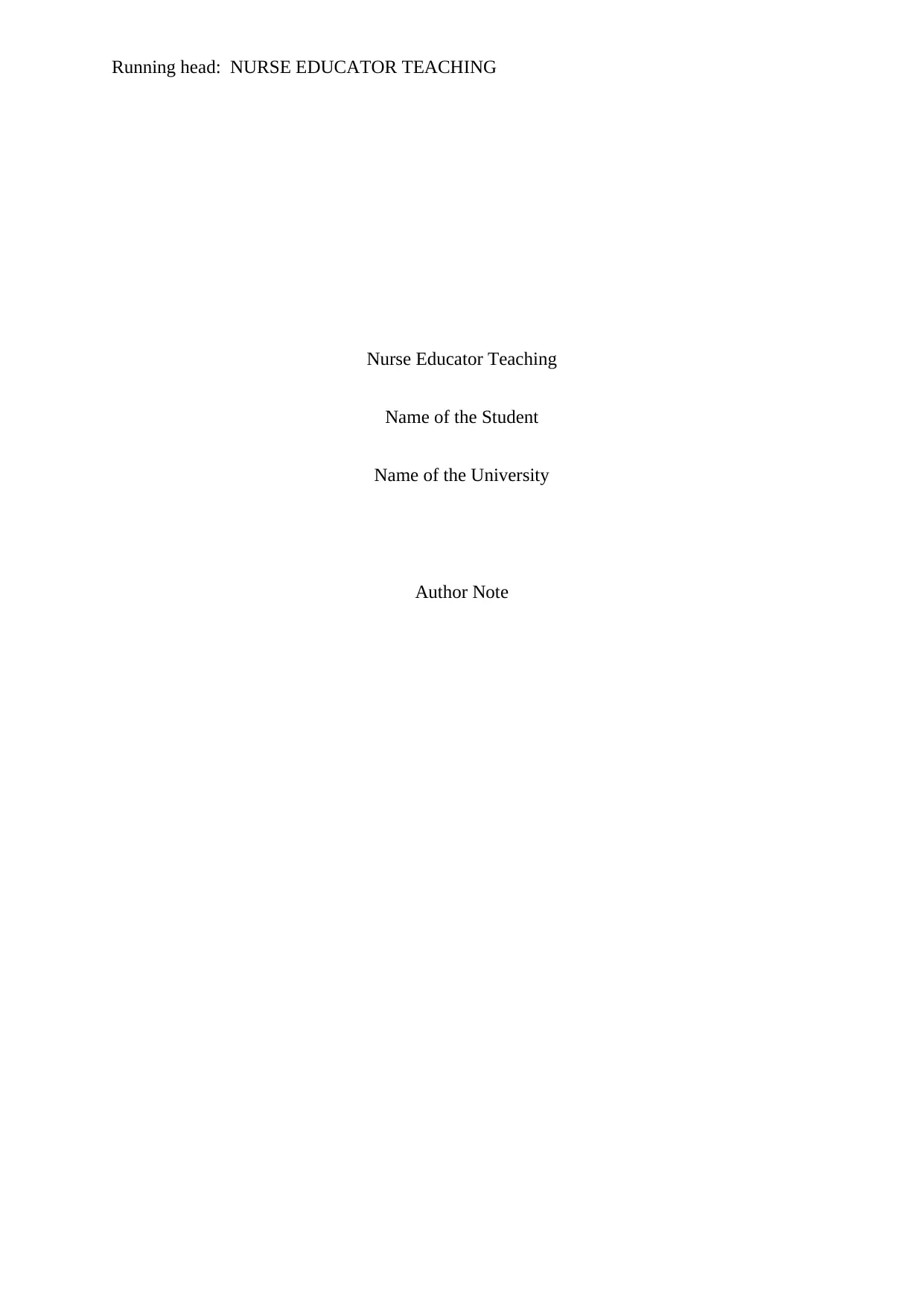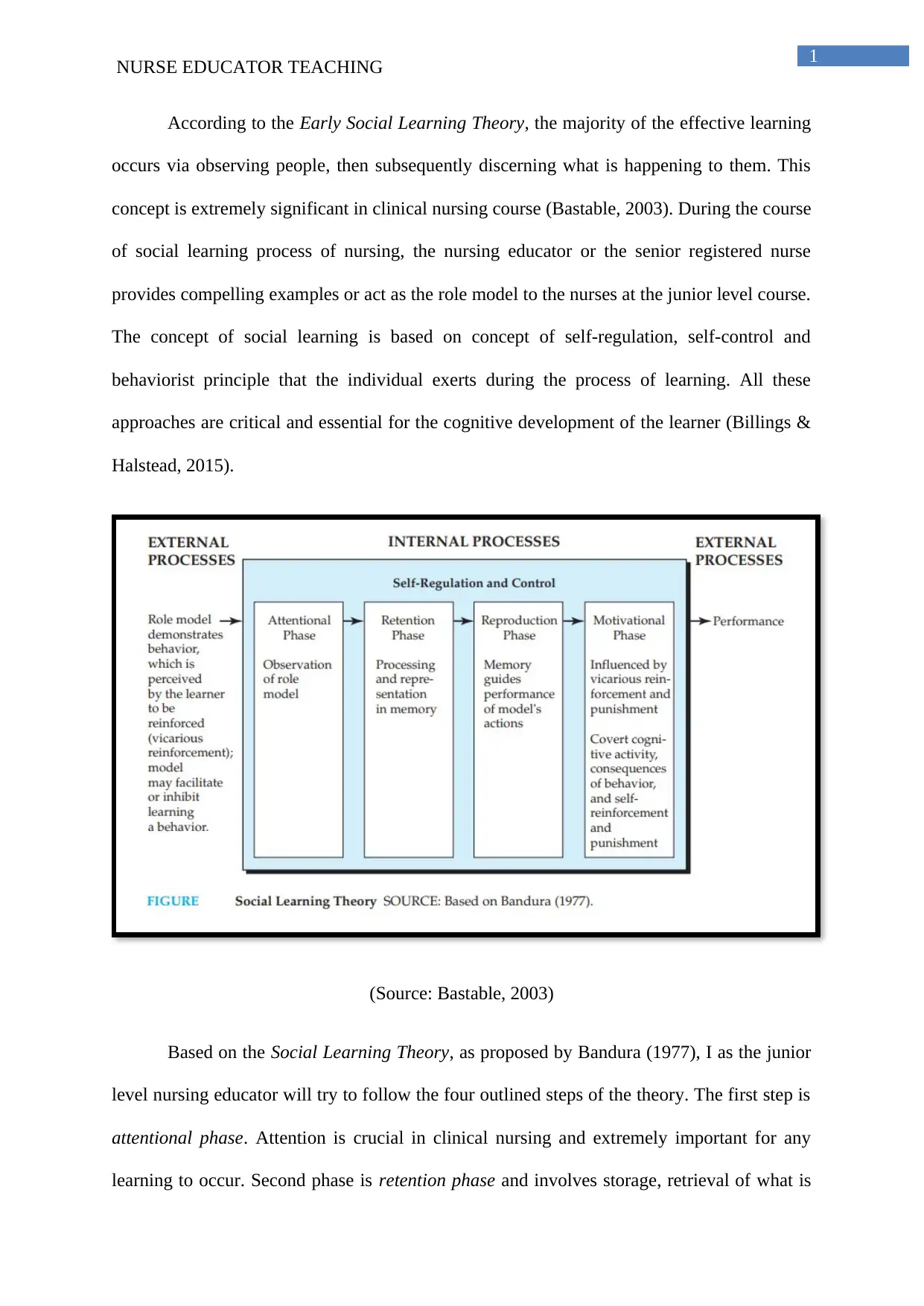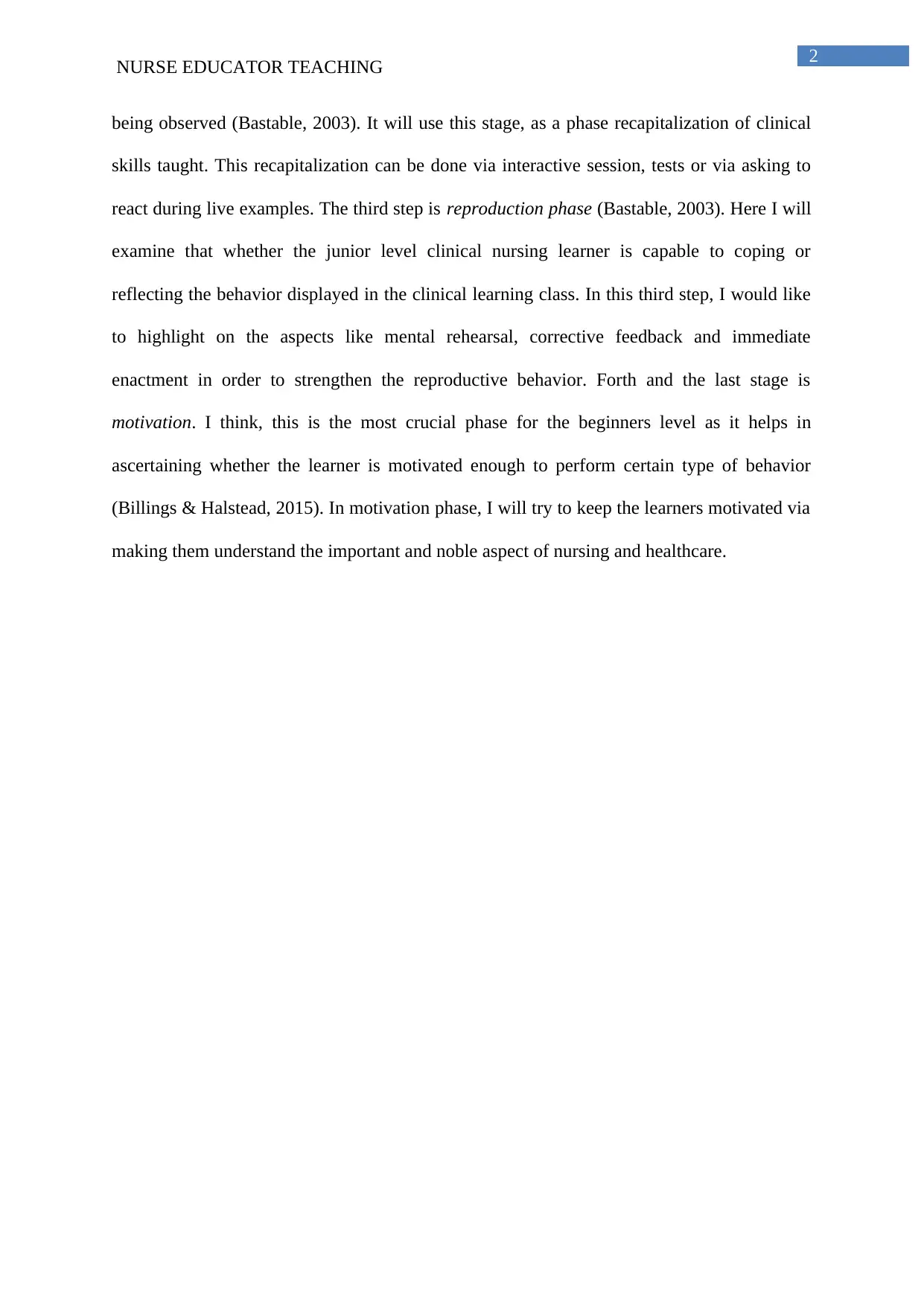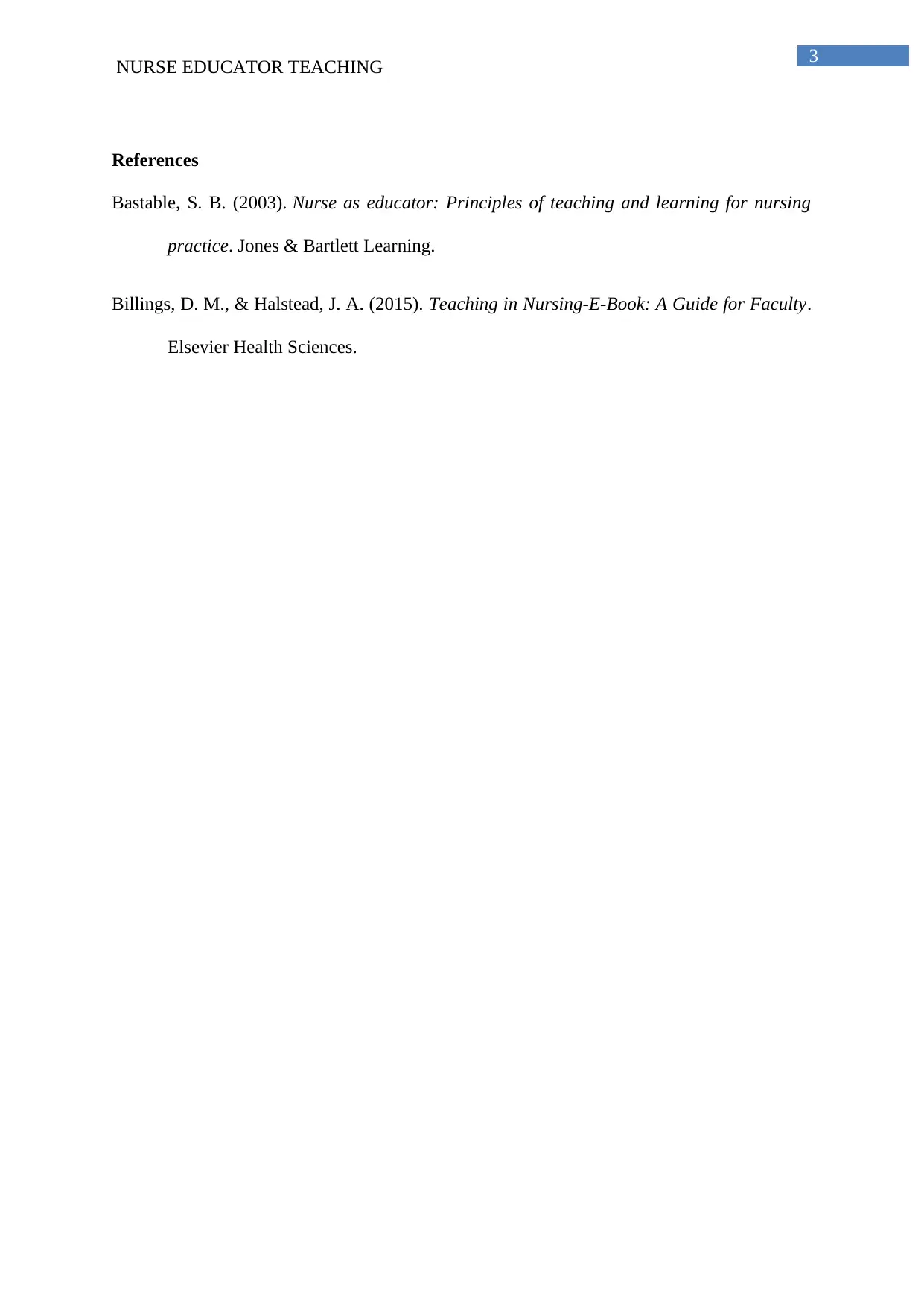Applying Social Learning Theory in Nursing
VerifiedAdded on 2020/05/16
|4
|466
|158
AI Summary
This assignment examines the principles of social learning theory and their relevance to nurse education. The author, acting as a junior-level nursing educator, outlines how they would utilize the four phases of social learning (attentional, retention, reproduction, and motivation) to effectively teach clinical nursing skills to learners. The assignment draws upon relevant sources like Bastable (2003) and Billings & Halstead (2015) to support their approach.
Contribute Materials
Your contribution can guide someone’s learning journey. Share your
documents today.
1 out of 4









![[object Object]](/_next/static/media/star-bottom.7253800d.svg)